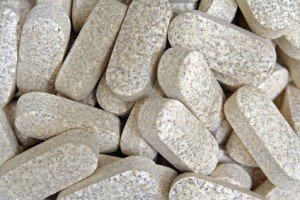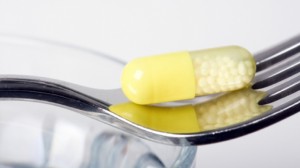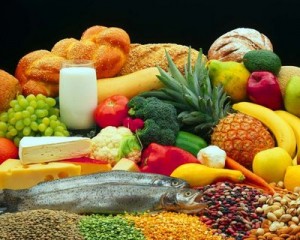Iron deficiency is a potentially serious condition that affects more than 1 billion people worldwide. At the opposite end of the spectrum, high iron levels creates health problems for millions more. While most of us have normal iron levels, it’s important to understand the consequences of getting too much or too little iron, says nutrition expert Christie Knudsen, MS.
The Most Common Iron Deficiency
Why is iron so critical? Iron deficiency, or insufficient iron in the blood, is the most common nutrition deficiency; research has shown that in the United States alone, up to 10 percent of women of childbearing age and adolescent girls–and 9 percent of toddlers–are iron deficient. Severe deficiency can lead to fatigue and loss of energy, substantial reduction in work capacity, impaired behavioral and intellectual performance, impaired capacity to maintain body temperature in a cold environment, decreased resistance to infection, increased risk of lead poisoning and slow development in young children, and ultimately, death.
Iron deficiency can be caused by an underlying disease, such as stomach ulcers or an intestinal form of cancer, or by an imbalance between iron loss and dietary iron intake. The most common cause of iron loss is menstruation. Another risk factor for iron deficiency is pregnancy, when insufficient iron can cause premature delivery, low birth weight and even fetal death. Athletes are also at risk for iron deficiency, since strenuous or prolonged exercise can lead to iron loss. Vegetarians are vulnerable as well, because dairy products generally do not provide adequate iron, and the type of iron found in plant foods (nonheme iron) is poorly absorbed by the body.
Increasing Iron Intake
While reducing iron levels can be difficult or impractical, you probably can control how much iron you consume. Your goal should be to get the Recommended Dietary Allowance (RDA) of 10 milligrams (mg) if you’re a male over the age of 19, or 15 mg if you’re a female between the ages of 11 and 50 (10 mg if you’re over age 50). Pregnant women should get 30 mg of iron, and lactating women need 15 mg.
The most practical way to increase your iron intake is to eat iron-rich foods. Here are some examples: 4 ounces lean ground beef (2.0 mg iron); 4 ounces sirloin steak (2.6 mg); half chicken breast (1.1 mg); 1 chicken leg (1.7 mg); 1 can tuna in water (5.3 mg). Almonds, pumpkin seeds, raisins, lentils, pinto beans and tofu are also rich in iron, but these foods contain nonheme iron, which is not as easily absorbed as the heme iron in beef, chicken and fish. Eating vitamin C-rich foods, such as tomatoes or oranges, at the same meal will increase absorption of nonheme iron.
Preventing and treating even mild iron deficiency produces significant benefits. Raising blood iron levels to normal in children and adults can dramatically improve their ability to think and concentrate.
Too Much Iron
High iron levels in the blood can increase the risk of heart disease and cause extra wear and tear on tissues and organs, especially if the diet does not provide enough antioxidants, such as vitamins C and E. Hereditary hemochromatosis (HH), or iron overload, is the most common genetic disease in the United States. One in 10 people carry the genetic mutation, and one in 220 have the disease. Individuals with HH absorb 20 percent or more of the iron they eat in food, whereas people without the genetic mutation absorb between 3 and 13 percent.
The body has no way to get rid of iron except through blood loss. Any extra iron accumulates in tissues and organs, particularly the liver and pancreas, and can lead to cirrhosis, diabetes, arthritis or heart failure. Women are just as likely as men to have HH. However, since women lose iron through menstruation and pregnancy, they usually do not develop HH complications until they’re in their 60s or even older, whereas men typically begin showing signs of the disease in their 40s.
The only way to know if you have normal iron levels is to have a physician take a blood test. Then you’ll know if you need to correct an iron problem to regain your concentration and energy. Since there are serious risks associated with too much iron, taking a supplement without the advice and supervision of a physician is not appropriate.
—original article from IDEA Fitness









